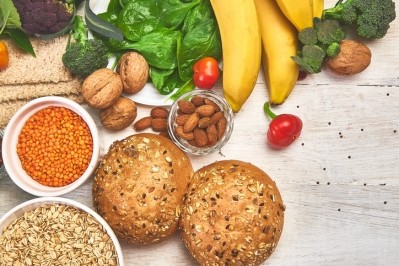'Biofortified staples is a no-brainer': How vitamin-enriched foods can be a ‘gateway’ to accessible nutrition

The world has not been progressing towards the Sustainable Development Goal to end hunger. That’s the conclusion of the UN’s Food and Agriculture Organization report 'The State of Food Security and Nutrition in the World'.
It found that the COVID-19 pandemic has exposed the weaknesses of the food system, with as many as 811 million people globally facing hunger in 2020. Nearly 2.37 billion people did not have access to adequate food in 2020 – an increase of 320 million people in just one year.
“No region of the world has been spared. The high cost of healthy diets and persistently high levels of poverty and income inequality continue to keep healthy diets out of reach for around 3 billion people in every region of the world,” FAO noted, flagging that healthy diets are becoming increasingly unaffordable, forcing many to live with ‘moderate or severe’ exposure to food insecurity.
The result is that today, one in five pre-school children is stunted due to chronic undernutrition.
“It is clear that global diets urgently need to improve and diversify to include more nutrient-rich fruits, vegetables and animal-source foods,” Dr Jan Low, Principal Scientist at CGIAR’s International Potato Center, stressed.
However, she noted, healthy diets are ‘out of reach’ for three billion people worldwide resulting in ‘insufficient vitamin and mineral intakes and bouts of illness’. The shift needed to improve access to nutrition ‘cannot happen overnight’, the 2016 World Food Prize Laureate observed. Instead, improving diets and nutrition must be seen as a ‘holistic process’.
Biofortification for affordable nutrition
Breeding staple foods, which are already accessible and affordable, with additional vitamins and micronutrients – known as ‘biofortification’ - is an approach that Dr Low believes can yield dividends. She describes this as ‘a fundamental way to support better nutrition for all’, but ‘especially those who struggle to achieve a more diverse and nutritious diet’.
“Many factors contribute to inadequate diets around the world, from cost to climate change, all of which require a comprehensive and systemic transformation with innovation at every stage of the food chain, from incentives and new technologies for producers to education and improved livelihoods for consumers,” the nutrition expert argued.
“But to combat hunger, people simply need sufficient calories, and through biofortification, calories that are easiest to come by can also be source of key vitamins and minerals essential for good growth and strong immune systems.”
Enriched sweetpotatos support Madagascan hunger efforts
This approach can be seen in action in Madagascar, a country where 91% of people live below the poverty line.
Southern Madagascar is experiencing the world’s first climate-induced famine. A drought, which began in November 2020, means that – as of May – around 1.14m people were facing acute food insecurity, according to the FAO.
Here, the International Potato Center is backing a new effort to deploy biofortified varieties of sweetpotato, which are enriched with vitamin A and ‘fast maturing’.
“Since sweetpotato is a hardy crop that is already widely eaten, the biofortified version is a way to deliver crucial nutrition quickly in a form that Madagascans recognize and are likely to adopt,” Dr Low explained.
This follows on the back of an International Potato Center project in Africa that has seen more than six million households benefitting from the crop in 15 countries over the past 10 years. “Just one small root, or 125g, of orange-fleshed sweetpotato meets the daily vitamin A needs of a young child,” Dr Low revealed. "By getting nutrition right in the early years, millions of children will be able to escape the limitations of inadequate diets.”
There is potential for biofortification to have a significant impact if it is adopted across other staple crops. For instance, Dr Low continued, the biofortification of rice is expected to provide up to 30% of vitamin A requirements in the Philippines, where it has recently been approved for cultivation and where more than 15% of children under six are vitamin A deficient because fresh fruit and vegetables are often unaffordable.
“Biofortification also offers a way to preserve and enhance the nutritional value of the most consumed cereals, including rice, wheat, millet, and sorghum,” she suggested.
She sees significant potential to address population-wide chronic deficiencies across a range of nutrients, from zinc to iron.
“Biofortifying grains with zinc can ensure good growth and support more than 200 enzyme systems, which is especially important given that nutrient declines in crops could result in an additional 175 million people being zinc deficient by mid to late century.
"Zinc-enhanced wheat not only offers up to 40% higher concentrations of zinc, but is also high yielding and disease resistant, meaning it not only safeguards the crop’s nutritional value against climate change, but it safeguards its productivity as well.
“Finally, iron enriched crops such as beans, millets, and potato can help support the proper cognitive development of children as well as their physical development, allowing them the best possible chance to reach their full potential and a prosperous, healthy future.”
Dr Low pointed to the success story that can be seen in the biofortification of beans through the CGIAR Better Beans for Africa project. In Rowanda, almost one-fifth of the population is now eating iron-enhanced beans, which provide 80% of the iron needs of young children and non-pregnant women.
The double whammy of climate change and poverty
Climate change is increasing food insecurity for the most vulnerable populations, placing stress on agricultural production and forcing people into greater levels of poverty. But it also has other implications for nutrition that biofortification could be harnessed to tackle, Dr Low continued.
“One under-reported consequence of rising levels of CO2 emissions is the degradation of nutritional quality of staple foods, with some studies indicating that future CO2 concentrations could reduce levels of protein, iron and zinc in cereals by up to 10%,” she said.
Biofortification should be used to produce crops that are resistant to this trend and help make improved nutrition more affordable for those most in need.
“Good nutrition through a diet rich with fruits, vegetables and animal-source foods is the foundation of a healthy, productive society. Yet poor households in low-income countries spend up to 70% of their income on food, and having calories to prevent hunger is their first priority.
“Using biofortified staples is a no-brainer way to get major micronutrients into the diet at low cost, a vital pathway towards better long-term, sustainable nutrition and health.”








